Turning Points in Christian History 4
Chris Knepp
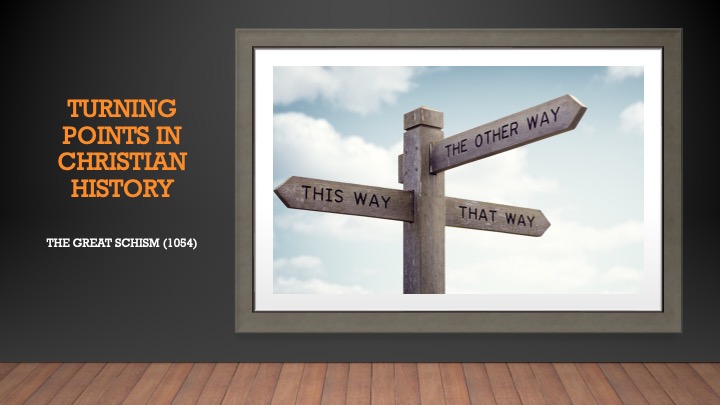
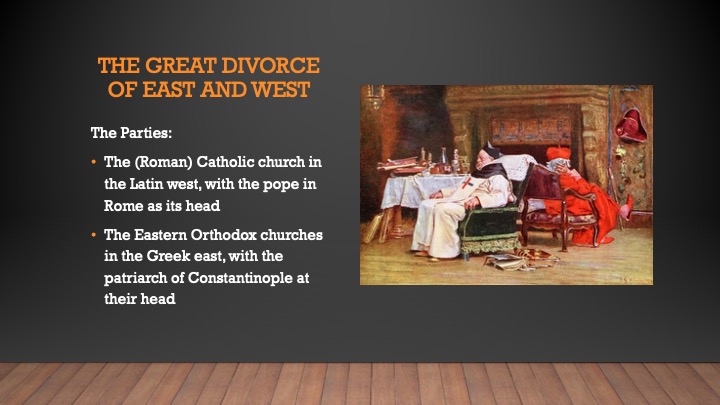
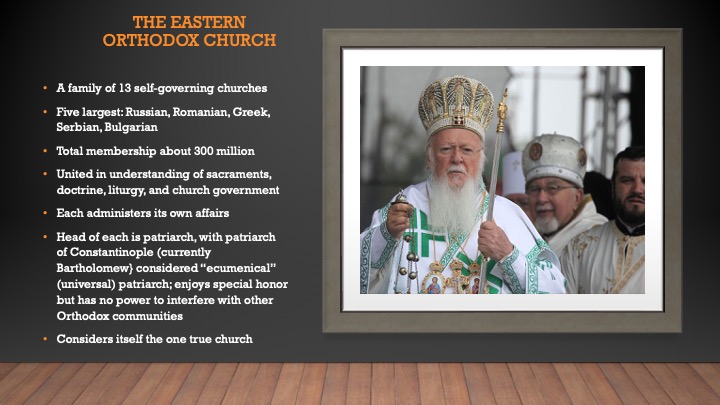
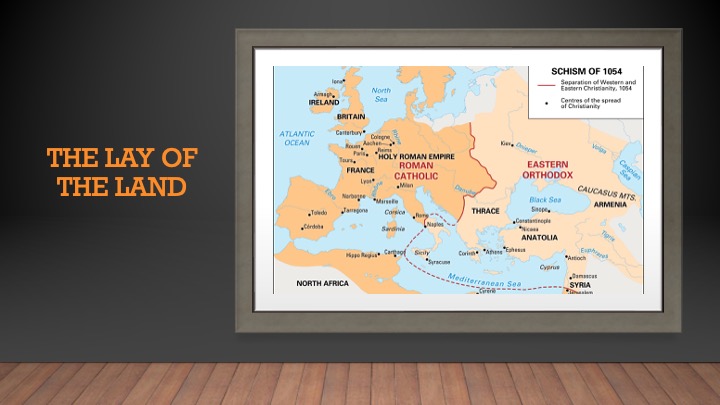
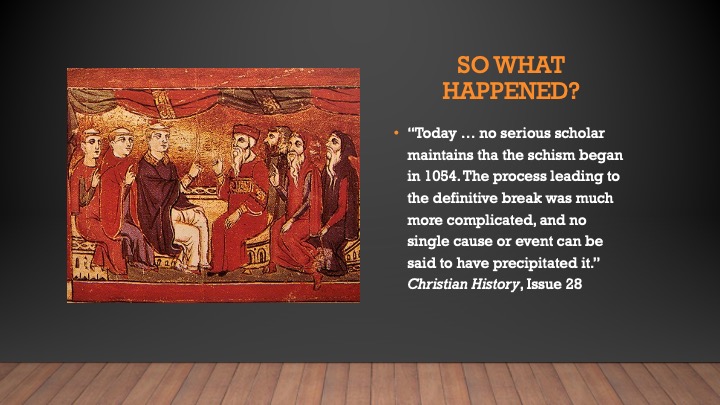
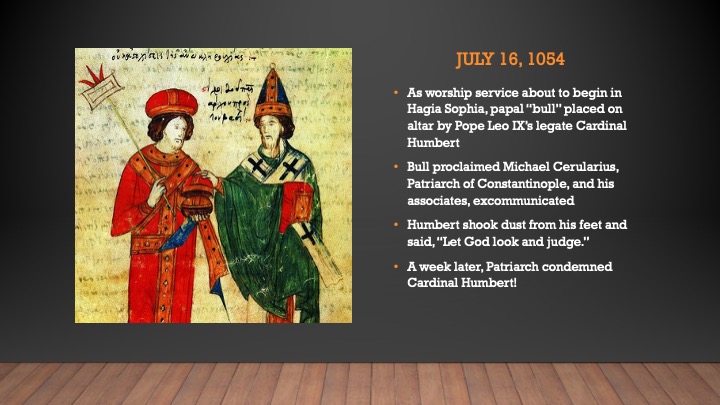
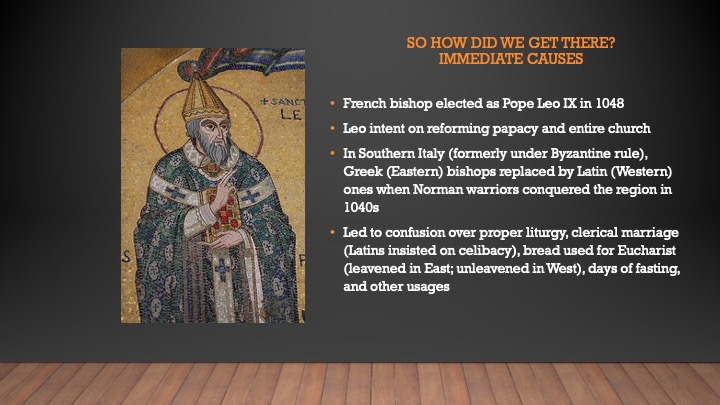
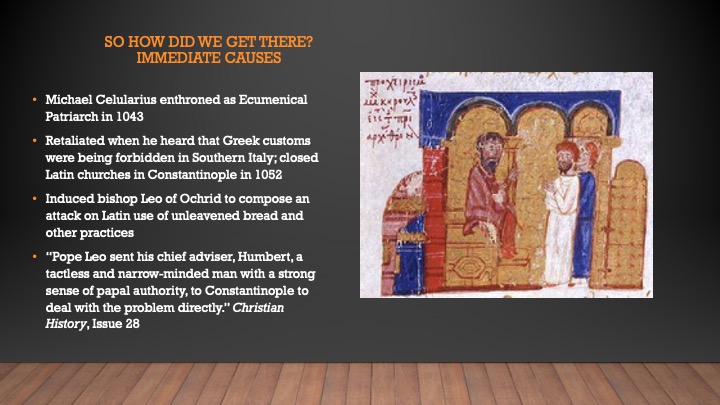
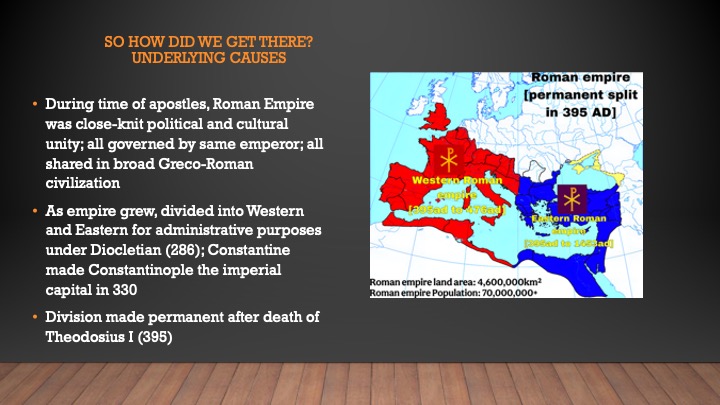
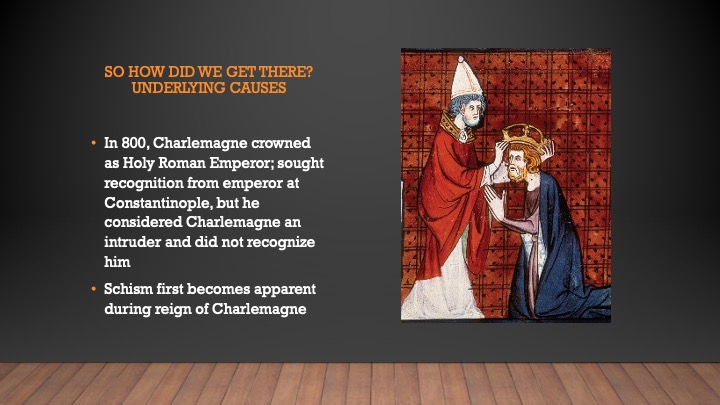
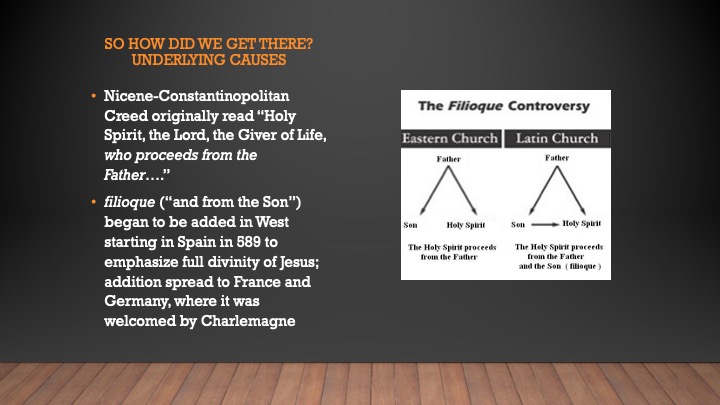
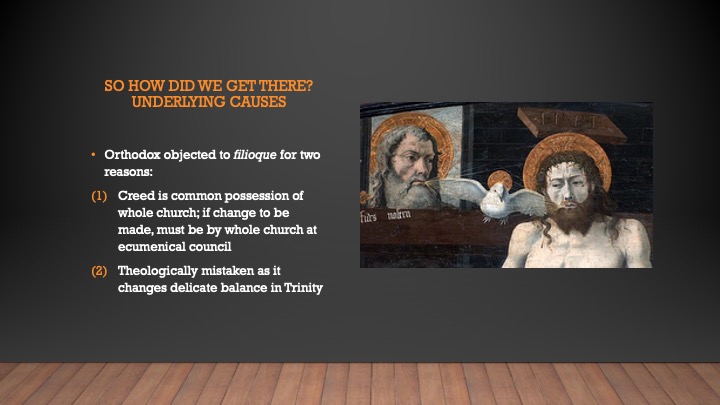
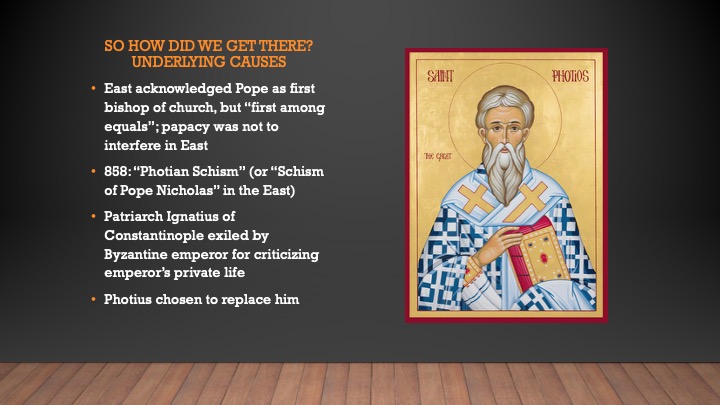
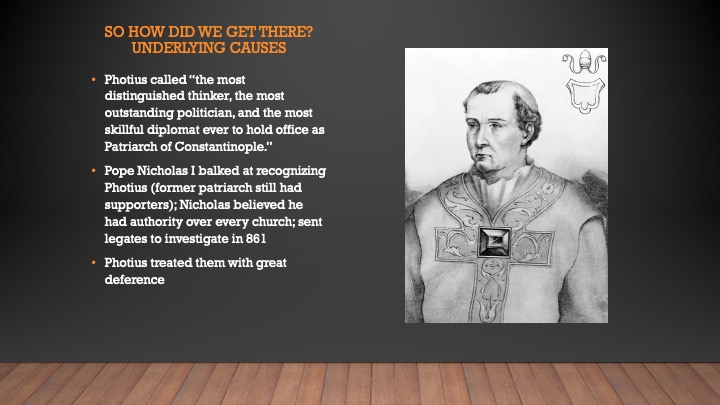
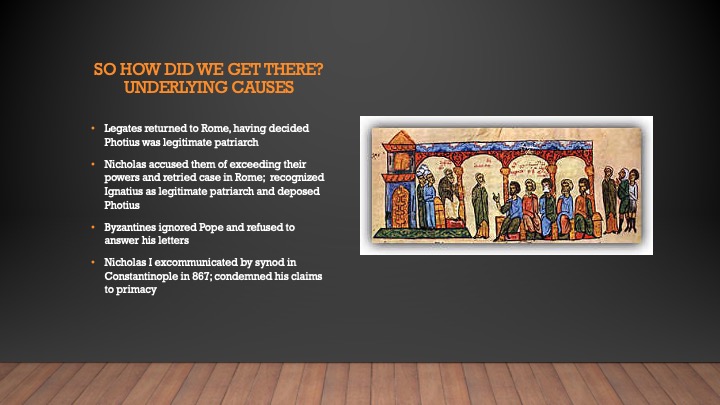
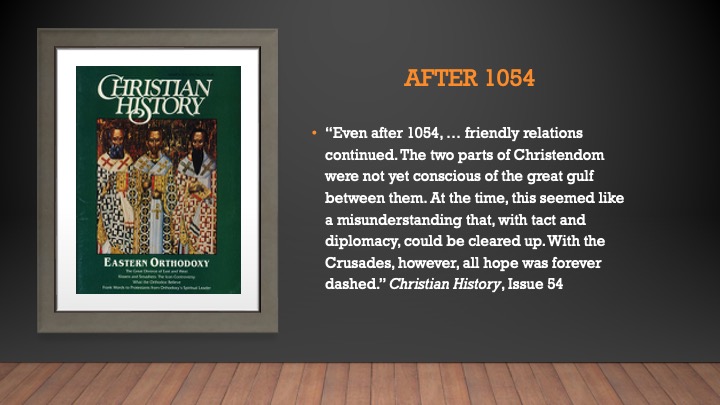
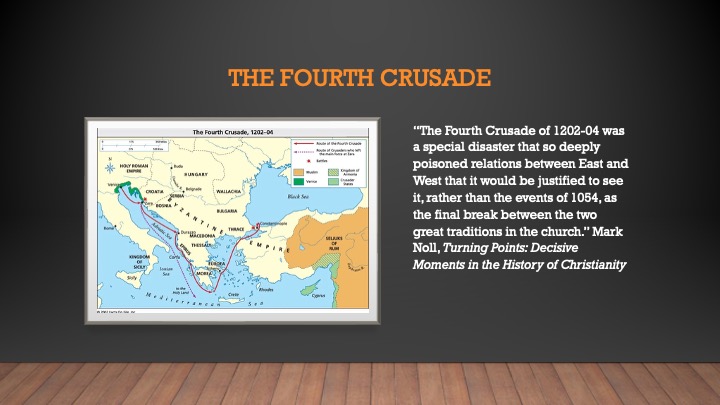
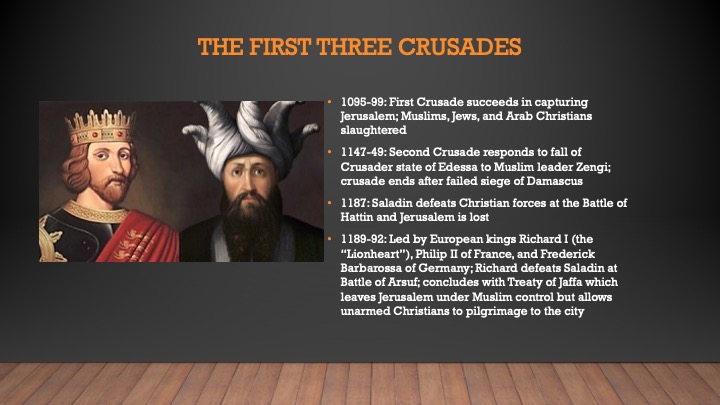
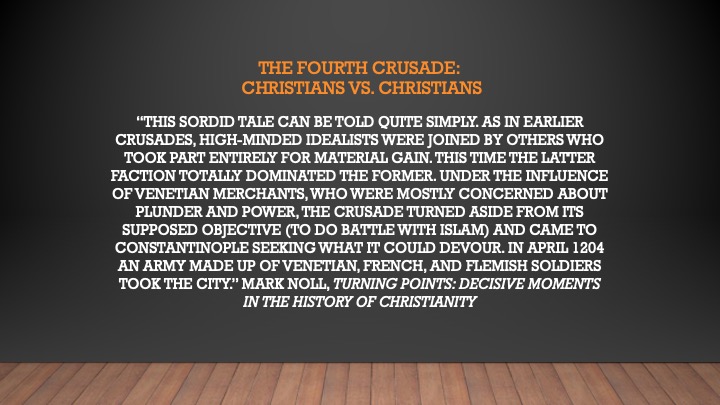
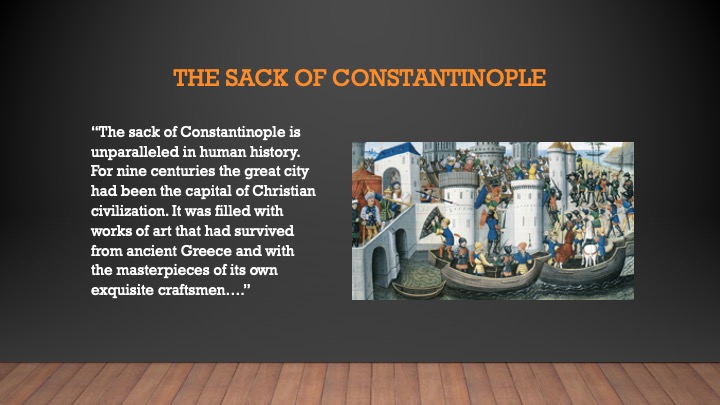
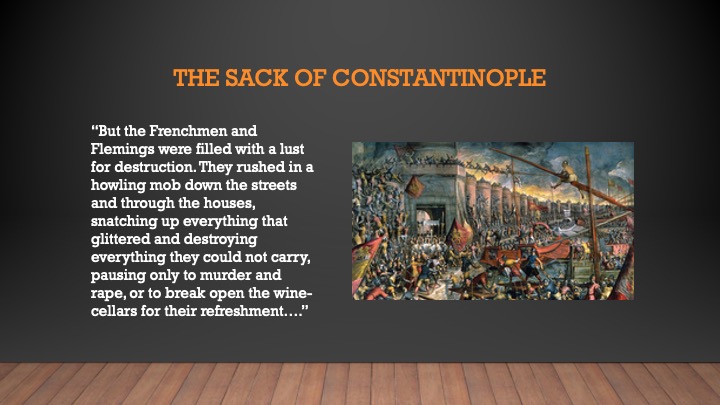
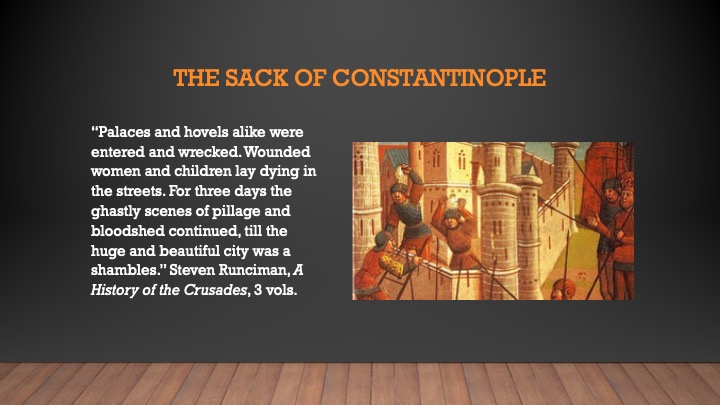
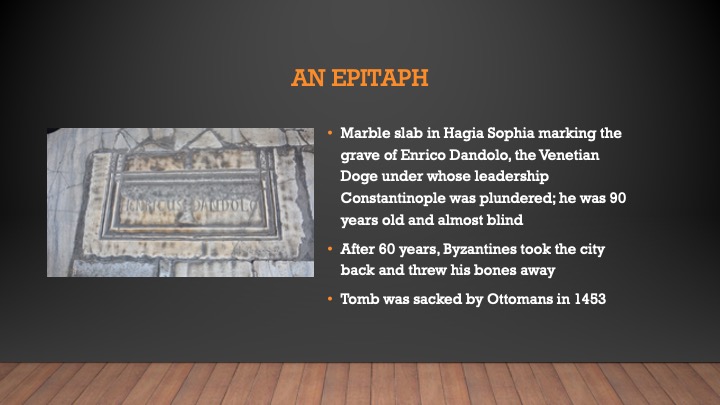
Turning Points in Christian History 4
Links
<< Home >> << Turning Points Menu >>
Turning Points in Christian History 4 - the Text
Turning Points 4 – the Text
Turning Points in Christian History
The Great Schism (1054) - The great divorce of east and west
The Parties:
• The (Roman) Catholic church in the Latin west, with the pope in Rome as its head
• The Eastern Orthodox churches in the Greek east, with the patriarch of Constantinople at their head
The Eastern Orthodox church
• A family of 13 self-governing churches
• Five largest: Russian, Romanian, Greek, Serbian, Bulgarian
• Total membership about 300 million
• United in understanding of sacraments, doctrine, liturgy, and church government
• Each administers its own affairs
• Head of each is patriarch, with patriarch of Constantinople (currently Bartholomew} considered “ecumenical” (universal) patriarch; enjoys special honor but has no power to interfere with other Orthodox communities
• Considers itself the one true church
So What Happened?
• “Today … no serious scholar maintains the schism began in 1054. The process leading to the definitive break was much more complicated, and no single cause or event can be said to have precipitated it.” Christian History, Issue 28
July 16, 1054
• As worship service about to begin in Hagia Sophia, papal “bull” placed on altar by Pope Leo IX’s legate Cardinal Humbert
• Bull proclaimed Michael Cerularius, Patriarch of Constantinople, and his associates, excommunicated
• Humbert shook dust from his feet and said, “Let God look and judge.”
• A week later, Patriarch condemned Cardinal Humbert!
So How Did We Get There? - Immediate causes
• French bishop elected as Pope Leo IX in 1048
• Leo intent on reforming papacy and entire church
• In Southern Italy (formerly under Byzantine rule), Greek (Eastern) bishops replaced by Latin (Western) ones when Norman warriors conquered the region in 1040s
• Led to confusion over proper liturgy, clerical marriage (Latins insisted on celibacy), bread used for Eucharist (leavened in East; unleavened in West), days of fasting, and other usages
So How Did We Get There? - Immediate Causes
• Michael Celularius enthroned as Ecumenical Patriarch in 1043
• Retaliated when he heard that Greek customs were being forbidden in Southern Italy; closed Latin churches in Constantinople in 1052
• Induced bishop Leo of Ochrid to compose an attack on Latin use of unleavened bread and other practices
•
“Pope
Leo sent his chief adviser, Humbert, a tactless and narrow-minded man with a
strong sense of papal authority, to Constantinople to deal with the problem
directly.” Christian History, Issue 28
So How Did We Get There? - Immediate Causes
• During time of apostles, Roman Empire was close-knit political and cultural unity; all governed by same emperor; all shared in broad Greco-Roman civilization
• As empire grew, divided into Western and Eastern for administrative purposes under Diocletian (286); Constantine made Constantinople the imperial capital in 330
•
Division
made permanent after death of Theodosius
I (395)
So How Did We Get There? - Immediate Causes
• In 800, Charlemagne crowned as Holy Roman Emperor; sought recognition from emperor at Constantinople, but he considered Charlemagne an intruder and did not recognize him
• Schism first becomes apparent during reign of Charlemagne
So How Did We Get There? - Immediate Causes
• Nicene-Constantinopolitan Creed originally read “Holy Spirit, the Lord, the Giver of Life, who proceeds from the Father….”
• filioque (“and from the Son”) began to be added in West starting in Spain in 589 to emphasize full divinity of Jesus; addition spread to France and Germany, where it was welcomed by Charlemagne
So How Did We Get There? - Immediate Causes
• Orthodox objected to filioque for two reasons:
(1) Creed is common possession of whole church; if change to be made, must be by whole church at ecumenical council
(2) Theologically mistaken as it changes
delicate balance in Trinity
so how did we get there?
Underlying causes
So How Did We Get There? - Immediate Causes
• East acknowledged Pope as first bishop of church, but “first among equals”; papacy was not to interfere in East
• 858: “Photian Schism” (or “Schism of Pope Nicholas” in the East)
• Patriarch Ignatius of Constantinople exiled by Byzantine emperor for criticizing emperor’s private life
• Photius chosen to replace him
So How Did We Get There? - Immediate Causes
• Photius called “the most distinguished thinker, the most outstanding politician, and the most skillful diplomat ever to hold office as Patriarch of Constantinople.”
• Pope Nicholas I balked at recognizing Photius (former patriarch still had supporters); Nicholas believed he had authority over every church; sent legates to investigate in 861
• Photius treated them with great deference
So How Did We Get There? - Immediate Causes
• Legates returned to Rome, having decided Photius was legitimate patriarch
• Nicholas accused them of exceeding their powers and retried case in Rome; recognized Ignatius as legitimate patriarch and deposed Photius
• Byzantines ignored Pope and refused to answer his letters
• Nicholas I excommunicated by synod in Constantinople in 867; condemned his claims to primacy
After 1054
• “Even after 1054, … friendly relations continued. The two parts of Christendom were not yet conscious of the great gulf between them. At the time, this seemed like a misunderstanding that, with tact and diplomacy, could be cleared up. With the Crusades, however, all hope was forever dashed.” Christian History, Issue 54
The Fourth Crusade
“The Fourth Crusade of 1202-04 was a special disaster that so deeply poisoned relations between East and West that it would be justified to see it, rather than the events of 1054, as the final break between the two great traditions in the church.” Mark Noll, Turning Points: Decisive Moments in the History of Christianity
The First Three Crusades
• 1095-99: First Crusade succeeds in capturing Jerusalem; Muslims, Jews, and Arab Christians slaughtered
• 1147-49: Second Crusade responds to fall of Crusader state of Edessa to Muslim leader Zengi; crusade ends after failed siege of Damascus
• 1187: Saladin defeats Christian forces at the Battle of Hattin and Jerusalem is lost
• 1189-92: Led by European kings Richard I (the “Lionheart”), Philip II of France, and Frederick Barbarossa of Germany; Richard defeats Saladin at Battle of Arsuf; concludes with Treaty of Jaffa which leaves Jerusalem under Muslim control but allows unarmed Christians to pilgrimage to the city
The Fourth
Crusade:
Christians vs. Christians
“This sordid tale can be told quite simply. As in earlier crusades, high-minded idealists were joined by others who took part entirely for material gain. This time the latter faction totally dominated the former. Under the influence of Venetian merchants, who were mostly concerned about plunder and power, the crusade turned aside from its supposed objective (to do battle with Islam) and came to Constantinople seeking what it could devour. In April 1204 an army made up of Venetian, French, and Flemish soldiers took the city.” Mark Noll, Turning Points: Decisive Moments in the History of Christianity
The Sack of Constantinople
“The sack of Constantinople is unparalleled in human history. For nine centuries the great city had been the capital of Christian civilization. It was filled with works of art that had survived from ancient Greece and with the masterpieces of its own exquisite craftsmen….”
“But the Frenchmen and Flemings were filled with a lust for destruction. They rushed in a howling mob down the streets and through the houses, snatching up everything that glittered and destroying everything they could not carry, pausing only to murder and rape, or to break open the wine-cellars for their refreshment….”
“Palaces and hovels alike were entered and wrecked. Wounded women and children lay dying in the streets. For three days the ghastly scenes of pillage and bloodshed continued, till the huge and beautiful city was a shambles.” Steven Runciman, A History of the Crusades, 3 vols.
An Epitaph
• Marble slab in Hagia Sophia marking the grave of Enrico Dandolo, the Venetian Doge under whose leadership Constantinople was plundered; he was 90 years old and almost blind
• After 60 years, Byzantines took the city back and threw his bones away
Tomb was sacked by Ottomans in 1453